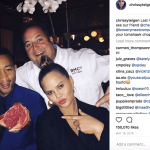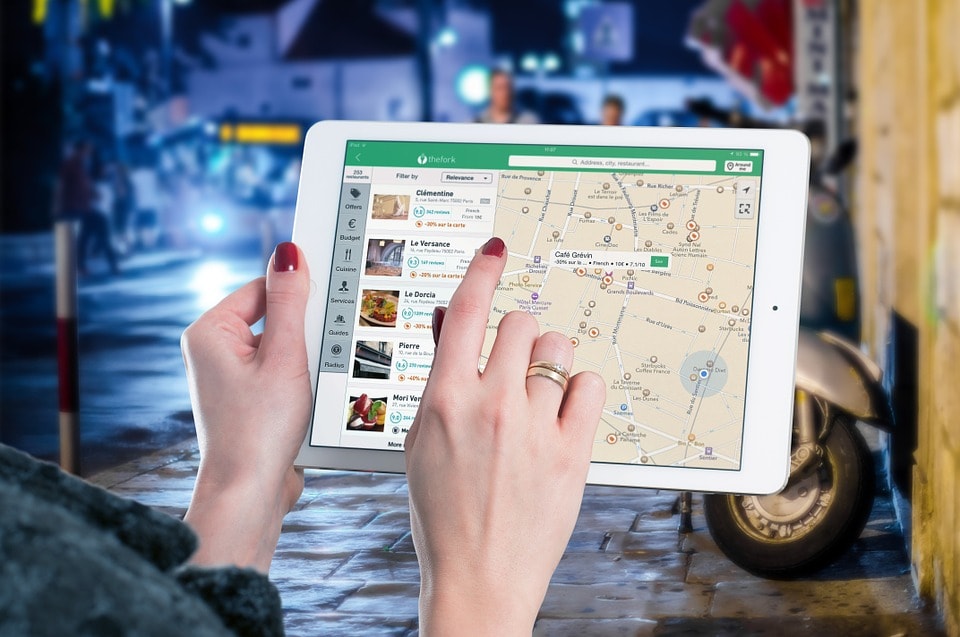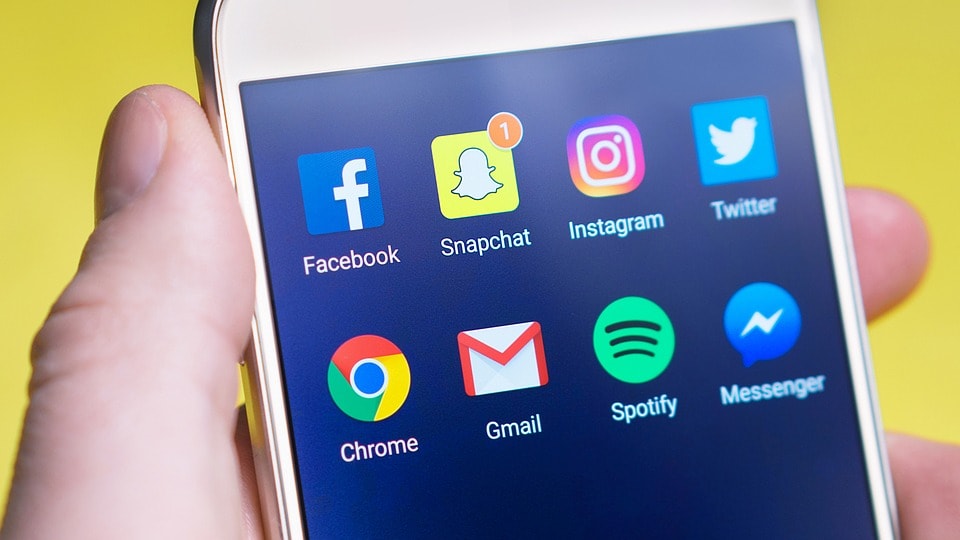
When you’re watching a show or game, the last thing you want to do is get up and go stand in line at the concession stand. Every minute you spend waiting for your food and drink, is a minute taken away from the event you paid to see! You could wait for intermission, like everyone else, but the lines become so long, it’s often not worth it. Wouldn’t you rather use your phone to order and have it delivered to your seat or skip the line at concession? 87 percent of people would! In seat ordering increase profits for venues like stadiums and auditoriums.
Widen the Sales Window
In seat ordering allows customers to place orders on their smartphone or using a tablet. Without in seat ordering, most concessions are limited to the 15-30 minute intermission or halftime to make their sales for the event. Customers are put off by the long lines, congestions, and inevitable waits as the kitchens are overwhelmed during this short window of time. At sporting events, 42 percent of people are discouraged from ordering concessions because of the long lines. Mobile ordering allows customers to place orders in their seat, and the food is either delivered directly to them, or they can skip the line at concession and pick up their food. They can pay directly through the app, so there is minimal waiting involved.
Increase Customer Experience
Stadiums are loosing fans, as 57 percent of people rather watch the game at home rather than going to the stadium. Fans go to see events like plays, concerts, and sporting events live because of the experience. Is typically not the cheapest option, but it is an overall better experience to most. Customers are not able to have the full experience with food, beverages, and retail because of the long lines and inconvenience of missing part of their event to go wait for their food. In seat ordering allows customers to make the most out of their event.
Customer Retention
In seat ordering can be combined with loyalty to engage customers and focus on retention. Each time a customer puts in an order, they can earn points to redeem for future purchases. Mobile loyalty apps allow you to connect with customers, and send them information like coupons, discounts, and information directly on their phone through push notifications or text message (SMS). You can use customer data to get a better look at demographics and spending habits, which can help with future marketing campaigns.
Maximize Revenue
The right point of sale system integrates the in seat ordering and loyalty information for data collection. Reports allow you to take control of your business, and use analytics to maximize efficiency. You can easily see which items are best sellers, to make sure you don’t run out, and get rid of other items that do not perform as well. Customer information is saved and can be used for marketing campaigns and communication.
Repeat Sales
Concession stands are notorious for long lines that frequently make customers have to choose between watching their event or having a snack. Mobile and in seat ordering allows customers to make multiple purchases throughout the game. The main sales window is expanded beyond the short intermissions. Customers do not have to deal with lines or waiting, which encourages spending.
In seat ordering is the modern way to enhance the customer’s experience at your venue. Loyalty can be integrated to increase customer retention and engagement. Comprehensive reporting lets you make the most out of your event, maximizing each seat’s potential revenue. Customers do not want to wait for their food and miss any of the action. They do not want to be crowded and congested during intermission or half-time, to try to put in their order before their even starts back up. The inconvenience is leading customers to for-go their snacks and sometimes even the entire event. In seat ordering focuses on bettering the customer’s experience while making the most out of the data.

Influencer marketing as one of the marketing trends to watch out for in 2018, according to Entrepreneur.com. Influencer marketing is incredibly popular on social media, as it is easy to track the influencer’s popularity through followers and post engagement. Top influencers, like celebrities, can get up to half a million dollars for one post. Nielsen found that 92 percent of people trusted an influencer more than a traditional advertisement or celebrity post.
What is an Influencer?
An influencer is someone who has an above-average amount of followers on their blog or social media channels. Influencers have a specific niche like food, or even more speck like pasta or ice-cream. Influencers are trend setters, and their opinions are weighted heavily. If the influencer likes your restaurant, hotel, or cafe, their followers will be itching to try it! Influencer’s followers are interested in the particular niche, making them a perfect target audience for companies. Micro-influencers have anywhere from 1,000 to 50,000 followers.
What is Influencer Marketing?
Influencer marketing involves paying an influencer or giving them something for free, in exchange for a review or a social media post involving the product. This post is considered sponsored, and has the potential to be viewed by all of the influencer’s followers. If you choose the right influencer, you can reach new audiences in a more effective way than traditional social media marketing. A successful influencer post can cause a spike in followers too.
 This post by Chrissy Teigan (with John Legend) may have been a sponsored post. It was posted before celebrities and other influencers had to disclose the post as an advertisement. The post had over 150,000 likes and comments. Chrissy may have just been helping a friend, but its more probable that she was offered a free meal and some cash for the post.
This post by Chrissy Teigan (with John Legend) may have been a sponsored post. It was posted before celebrities and other influencers had to disclose the post as an advertisement. The post had over 150,000 likes and comments. Chrissy may have just been helping a friend, but its more probable that she was offered a free meal and some cash for the post.
Influencer Marketing in Hospitality
The hospitality industry is a perfect industry for influencer marketing because it is very visual. Food is one of the biggest topics on Instagram, which is based on photographs rather than text like Twitter. Food blogging has taken off, and there are many different bloggers with varying followings on the scene. You can have a broad blogger who tries all of the foods in an area, or a highly specialized one who travels around the world looking for the “best of” a certain category. Hotels, stadiums, and auditoriums also photograph well and make for great social media posts. It’s easier for an influencer to take a picture with a plate of pasta or in pristine hotel room, than a vitamin or lotion. It also seems more natural because everyone eats and visits hotels, or auditoriums. It seems more genuine then the influencer taking a blatant picture of a product.
Find Micro-Influencers
The first step into influencer marketing is finding your micro-influencers. Kim Kardashian is likely not in your business’s marketing budget, especially for an independent restaurant or cafe. A micro-influencer will be a lot more affordable, and may have a following that’s specific to your restaurant’s specialty or location. You can find these micro-influencers by doing a Google search for the top bloggers in your specialty ex. “Food Bloggers in Orlando,” and read their blogs to see if they’re a good match. You can also search within the social media platforms. If you go on Instagram you can search “Food Bloggers Orlando” and a list of hashtags and accounts will pop up. If you find a relevant blogger, you may be able to find others based on the accounts they follow. Typically the blogging community is tight-knit and many bloggers follow one another.
How to Reach Out
You can reach out to a blogger typically on their blog, through a direct message on social media, or through the email listed in their “about section” on their social media page. Many influencers will say “for inquires please email ___@___.” Always check their social media pages and blog to see their engagement. Likes can be bought, so its better to check their influencer status by seeing if their posts get many likes, retweets, and comments to gage their legitimacy.
Payment
You will be able to negotiate a contract with the influencer if they are interested. If the influencer is still rising, you may be able to offer them a free meal, stay, etc in exchange for a positive review and post. If the influencer is more established, they may want payment on top of the free product.
Is It Worth it?
For the right influencer, absolutely! Your restaurant, bar, cafe, or hotel will be able to reach thousands of potential customers with one post. Influencers are seen as reputable and highly trusted, so the post is weighted more than a regular advertisement would be. Influencer marketing is the new social media marketing, and is only going to grow in 2018. You can jump aboard this trend before your competition catches on!

One of the main keys to running a successful restaurant is customer retention. You want loyal customers coming back for more, increasing their spend, and bringing friends. Loyal customers are worth more than new customers. Loyal customers help spread positive word-of-mouth, by sharing pictures on social media, writing good reviews, and telling others about your business. How do you boost customer retention? Reward your customers, offer a great experience, have a social media presence, create a brand, and offer events and other incentives to come each week.
Loyalty Programs
Rewarding customers is easy with the right loyalty program. You can use points, punchcards, or an app to incentivize customers to return. Points or punchcards can be based on number of visits or spending. A loyalty app is a more modern way of rewarding customers, using technology to offer tailored rewards. All customers are not equal, so why should their rewards be? Should you give the same reward to a customer who spends 100 dollars a week as one who only spends 15? The goals are different. You want the higher spending customer to keep returning and you want to increase the spending of the other. Apps also allow for enhanced customer communication, you can use push, sms, or email to send them promotions or let them know about new specials or events.
Online Reviews
What do your online reviews say? Bad Yelp or social media reviews could be negatively affecting your customers. If you’re reviews aren’t filled with happy customers raving about the food and the experience, potential or existing customers may decide to go to a competitor with better reviews. Even if a customer had a great time, they may think it was a fluke based on the negative experiences of other customers. Online reviews are a great way to see how your business is doing. All customers aren’t vocal, you may not be able to tell a customer is unhappy. Their problems go unseen until post about it. Read your online reviews and make the necessary changes. If your fries are too salty, talk to the kitchen. If your bathrooms are dirty, start having your employees check the bathrooms more regularly.
Social Media Presence
Social media helps restaurants, bars, and cafes connect with customers. You can use visual platforms like Instagram to showcase beautiful pictures of your menu items. Facebook can be used to make event pages and invite your loyal customers (hopefully they will invite their friends). Twitter is great for posting updates like new specials or promotions. You can interact with your customers, let them feel like they know you. Repost their pictures and listen to their comments. You can ask questions, get opinions, and make them feel like part of the “family.”
Create a Brand
Starbucks vs Dunkin Donuts, most people have a preference. Is it truly about the coffee or is it about the brand. Make your business unique, set it apart from your competitors. Give your customers something only you can give them. You could make your business exclusive. Make it the “it” place for date night, any other option is “less than.” Your business could be a close-knit family; offer shirts, name a special after a favorite customer.
Make it fun
The customer experience can be more important than the actual food or drinks when it comes to customer retention. Fun events like trivia, live music, or themed nights can turn customers into regulars. Weekly events give customers a reason to return besides the food or drinks. Exclusive events like a special tasting menu focusing a foreign cuisine or special ingredient can create an experience that encourages retention. If the event is successful, the customers will be looking forward to the next one.
The goal of customer retention is to increase “regulars.” “Regulars” are golden in the restaurant industry. Customers that keep coming back often bring friends, and can be encouraged to increase spend. If your business has “regulars” then it’s doing something right. It’s important to reward regulars to keep them returning.

Websites and a social media presence are extremely important for restaurants, bars, cafes, bakeries, and other small businesses. Digital ghosting, lacking an online identity, makes you invisible to customers. Word of mouth has turned digital, and unless you’re in a location with extremely high foot traffic, you need to have an online presence.
Social media is free and easy to maintain, making it a no-brainer. Websites can be a little trickier. Unless you have a friend who can code or work magic with WordPress, building a complex website can be very expensive. Thankfully, most restaurants, bars, and cafes only need a basic website to start out. You can redo your website or hire someone to work on the SEO (search engine optimization) down the road.
Basic info your website needs to start out:
- Address
- Phone number
- Easy to read menu
- Great pictures of menu items
Free Website Tools:
Wix
Wix is a great tool for businesses on a budget and those without website building knowledge. It’s a drag and drop website builder, meaning you “drag” website elements like text, photos, videos, etc and “drop” them on the page wherever you like. You can then easily edit and customize. If you work with WordPress or a different site that isn’t drag and drop, you will have to use code to make changes. Wix is meant for those without any previous knowledge of website building. You can pick a pre-designed template, customized for various businesses ranging from fancy restaurants to cupcake shops. The website you create will be automatically optimize for mobile, meaning it will be easily viewable from a smartphone.
Benefits:
- Customizable Templates
- Menu template
- Facebook and Foursquare menu integration
- Mobile optimized
- Online ordering (receive updates via email or phone call)
- Online reservations
- Can have an online store with the paid subscription
If you want a free site using Wix, you’re URL will username.wixsite.com/sitename/page-url instead of a custom domain (website name) like OrlandoOysters.com. In order to have custom domain, you will need to purchase the name you want and set up a hosting plan. Free sites also show Wix ads.
Paid Wix subscriptions rang from 5$ per month for a basic subscription to 25$ a month for VIP. They often run discounts if you pay for a full year upfront. You still will need to purchase your domain. You can purchase your domain at GoDaddy.com or domains.Google.com. Domains typically cost .99 cents for the first year and then 10 to 15$ per year after that.
Weebly
Weebly is Wix’s most direct competitor. It is also a free drag and drop website builder. The two platforms are very similar. Wix has the upper hand when it templates; it offers more free templates and they tend to be a little nicer. Weebly’s paid services range from 8$ to 25$, making it competitive in price. It offers the same free services as Wix, with a Weebly domain and advertisements.
Benefits:
- Template code can be altered
- Market place for “premium” templates that typically cost around 50$
- Currently if you pay the year upfront, you get a free custom domain for the year
Your restaurant needs a website so potential customers can find you online and look at your menu. Down the road, you can work on your website on your own, or with a company to make it rank higher in Google searches. A restaurant website should have basic info for customers and feature great pictures to encourage them to visit. You can make a free website to start using Wix or Weebly in less than an hour!

Are you struggling to create buzz about your restaurant, bar, or cafe? Have you fallen behind in the digital age? Word of mouth has migrated to social media, with sharing of pictures and tagged comments. Social media is an essential, free, tool that allows you, as the restaurant owner or manager, to connect with your customers and share mouthwatering photos, new specials, and updates.
According to a study by Trip Advisor, only 17 percent of restaurants have a marketing employee. If you’re like 83 percent of restaurants then the social media is left to you, the owner or manager. You may not have a degree in marketing or even a personal Facebook page, but social media is user-friendly and starting small with some good pictures and updates will increase your business.
What is #FoodPorn?
Foodporn is the popular hashtag used for visually appealing or appetizing photos of food. Social media has changed the way customers think about their meal choices. Some customers want to eat at places they know will lead to great social media pictures. Chefs are having to pay attention to the meal presentation and how photogenic it is. Dillon Burke works with restaurant to make their menu items “Instaworthy.” His firm helps food trends go viral, and helps restaurants keep up with the trends.
What is a social media influencer?
49 percent of consumers seek “purchase guidance” from influencers. Social media influencers have heavy weight in their specific categories. They are seen as “experts” in their particular niche and have a large following. They can create new food trends with a snap of their iPhone or drive business with a good review.
Facebook
Every restaurant needs a Facebook page, especially if it doesn’t have a website (read why your restaurant needs a website). Facebook has a broader age demographic, ranging from young millennials to their grandparents. Facebook is more business focused, and is a great platform for adding business details like hours of operation.
Perks:
- Built in “five star” review system to encourage new business
- “Call now” button so customers can call you directly from Facebook
- Customers can get easily directions to your business on their phone or computer
- “Send message” allows customer communication
- “Popular Hours” shows busiest hours for restaurant
- You can make event pages and invite customers
- Clickable link to website
- Easily add your menu
Instagram:
Instagram is a visual platform, made for photo sharing. It has recently upgraded to videos and live streaming. Instagram is a powerful social media tool for restaurants because it’s all photo-based. The user scrolls through feeds of pictures and short videos with minimal text. It should be updated daily, if not multiple times a day with mouthwatering pictures or cool behind-the-scenes pictures of staff or prep. Instagram is hot with the millennial demographic, who are visual and are more likely turn to social media when deciding where to eat.
Tips:
•Make your photos as professional looking as possible. You can take the pictures on an iPhone, you don’t need a fancy camera. It’s all about the lighting and staging. Read this article for some tips.
•Use relevant hashtags. Your hashtag strategy will depend on whether or not you’re a local business or a large franchise with one social media account for the entire brand. If you’re a local restaurant your hashtags should revolve around local cities, events, and always tag your location.
•Create your own hashtag so customers can tag you. You can put it in your description and encourage customers to take pictures of their favorite menu items and tag you in it.
•Make Instagram part of your branding. You can use it as a tool to help shape how customers feel about your establishment. You can give a “mom and pop” feel by showing the behind-the-scenes action or a very modern new-age feel with expert staging.
Twitter
Twitter’s claim to fame is its 140 character limit. You can only post short bits of information at a time. Twitter should be used for updates on special and events, as well as photos and videos. Twitter can be updated more frequently than the other platforms because Twitter feeds move quickly. Your customer may follow 1000 different accounts and their feed will be updating constantly. Increasing the number of posts, boosts your visibility.
Google +
Google + isn’t as widely used as some of the other social media platforms, but you should still have an account to increase your search engine visibility. Add pictures, the correct address, hours, and any other information you can so when customers Google your restaurant the information will pop up on the right hand side of the page along with a map. Some of this information may be automatically generated by Google, if you haven’t made your Google + page yet. If you have time, post pictures, coupons, and other updates on this platform, but focus on Facebook, Instagram, and Twitter more.
SnapChat
Snapchat has the youngest demographic of the main social media platforms. It is similar to Instagram, it’s a visual platform. The main feature is that the pictures and videos stay up for 10 seconds or added to your “story” for 24 hours. You can send pictures and videos to a specific user or show it to all of your followers. You can add doodles and take pictures right in the app. It is a little more time consuming but is rewarding for businesses that are looking to connect with younger customers.
Social media can put your business on your map and help your business’s popularity. Taking the extra effort to create social media handles and stage photographs can help reach new customers. There are so many choices when deciding where to eat or drink, businesses are becoming more about their brand. Social media is a important way to brand yourself and show customers why they want to visit your place. Highlight the atmosphere, repost pictures of happy customers and good reviews, take mouthwatering pictures. Run a menu special that features a new food trend. Give your potential customers #FOMO, the fear of missing out.



 This post by Chrissy Teigan (with John Legend) may have been a sponsored post. It was posted before celebrities and other influencers had to disclose the post as an advertisement. The post had over 150,000 likes and comments. Chrissy may have just been helping a friend, but its more probable that she was offered a free meal and some cash for the post.
This post by Chrissy Teigan (with John Legend) may have been a sponsored post. It was posted before celebrities and other influencers had to disclose the post as an advertisement. The post had over 150,000 likes and comments. Chrissy may have just been helping a friend, but its more probable that she was offered a free meal and some cash for the post.

